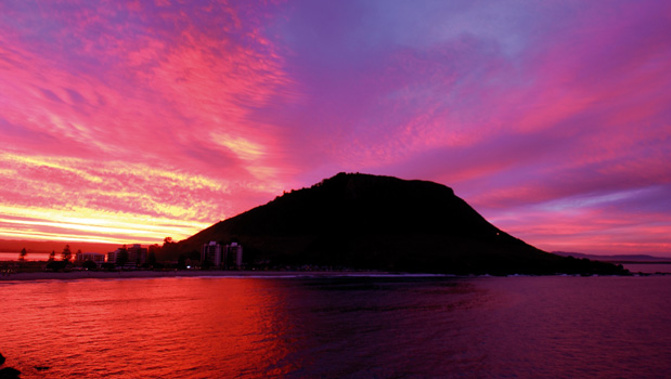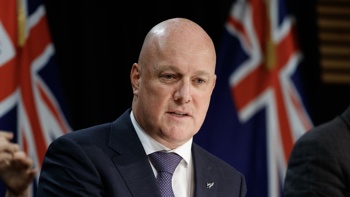
It draws hoards of swimmers every summer, but lifeguards at Mount Maunganui have also clocked up the most rescues over the past five years.
As swimmers hit the beach for the first weekend of summer, the Herald on Sunday has crunched the numbers from Surf Life Saving New Zealand, to find out where our most dangerous beaches are.
With 257 rescues in the past five years Mount Maunganui topped the list, but the local club's general manager Glenn Bradley said those figures included responses to incidents up the mountain itself.
"The key driver for that statistic is the number of rescues and responses that were done actually up on Mount Maunganui. More than 50 per cent of our overall responses were land-based rescues."
Muriwai Beach on Auckland's West Coast followed closely behind in the list with 256 rescues over the past five years. Piha came in third with 229 rescues - though the West Coast beach topped the list last season with 54 saves.
Washing up in 4th and 5th place was the Coromandel Peninsula's Hot Water Beach with 209 rescues, and Raglan - where lifeguards carried out 189 rescues.
National lifesaving manager Allan Mundy said the risk largely lay with the people that hit the various shorelines - rather than on the beaches themselves.
"We always say, beaches are not dangerous. It's what people do on them that make them dangerous."
Spikes in rescue numbers line up with several things including fine weather and popularity with holidaymakers or tourists, Mundy said.
"If you've got a male-dominated beach then you are going to see spikes.
"Also, if you've got a beach population that are from outside the area - ie they're not locals - then they're less likely to understand the conditions and get themselves in trouble."
Along with the approximate 1500 rescues that were carried out last year were hundreds of thousands of 'preventative actions', or 'assists'.
That was when swimmers weren't yet in trouble, but the next swell that came through would likely be enough to push them into a rip or some other danger.
Mundy said the ratio between the two - around 440,000 preventative actions paired with an approximate 1500 rescues - was good.
It showed lifeguards were doing their job, he said.
"We've got 74 clubs around the country, 80-plus patrolled areas, and no one has ever drowned between those patrol areas.
"And that's the key, people will say 'how do we stop all of this drowning on the coast?'. It's really simple. Swim between the flags."
For intel on Auckland's West Coast beaches Jonathan Webber is something of an expert.
On top of over 25 years of experience at Piha and Muriwai beaches, Webber is the operations chair of Surf Life Saving Northern Region. SLSNR is a separate regional support organisation made up of 17 clubs across the top of the North Island but works alongside Surf Life Saving New Zealand.
Neither service receives central government funding for lifesaving services, though they do receive some funds from the NZ Lottery Grants Board as well as from Sport NZ and NZ Search and Rescue.
Webber agreed that the spike in the number of incidents at Piha and Muriwai was largely due to the volume of swimmers hitting the beach and the proportion of those visitors unfamiliar with the surf conditions.
"Any body of water is dangerous. Certainly the rips and the holes are more prevalent on the West Coast beaches than they are on the east. But that being said people certainly still get into difficulty on East Coast beaches.
"If you compare the drowning toll to say the road toll, obviously the road toll is a lot higher. But if you looked at all the rescues the lifeguards at Piha and all the other lifeguards around the country did… and if you add in the work that Coastguard and other emergency services like the rescue helicopters do - if we didn't have those water rescue services then the drowning toll would actually eclipse the road toll seven times over."
Webber said we shouldn't simply accept our rescue and drowning numbers as inevitable.
Almost every drowning off our coastlines was preventable, he said.
Kicking off summer with 69 preventable fatalities so far this year, against 66 last year for the same period, Water Safety wanted every New Zealander to be aware of the dangers posed by our beaches and waterways.
Water Safety's chief executive Jonty Mills said key things were swimming with others and looking out for children.
"While we want people to enjoy our country's beautiful waterways they need to be aware of the dangers and think to themselves "am I prepared and have the capability if something goes wrong?"
New Zealand's most dangerous beaches
The top number of rescues carried out by lifeguards over the past five years
- Mount Maunganui (257)
2. Muriwai (256)
3. Piha (229)
4. Hot Water Beach (209)
5. Raglan (189
Take your Radio, Podcasts and Music with you









